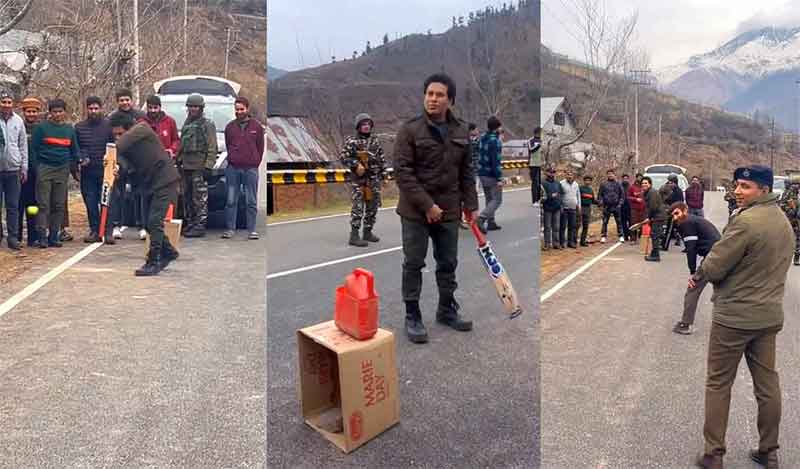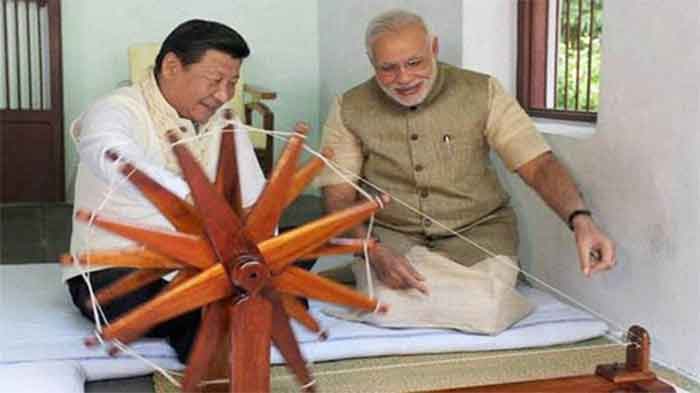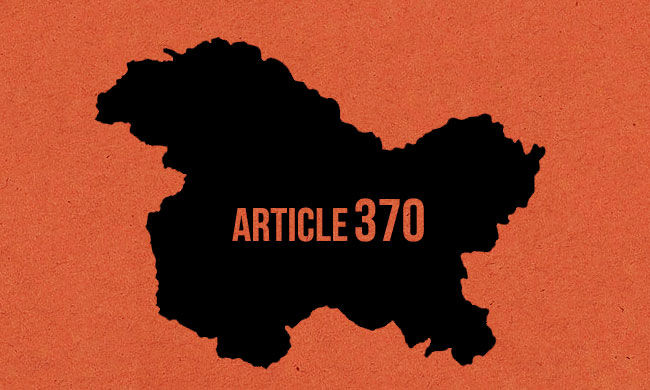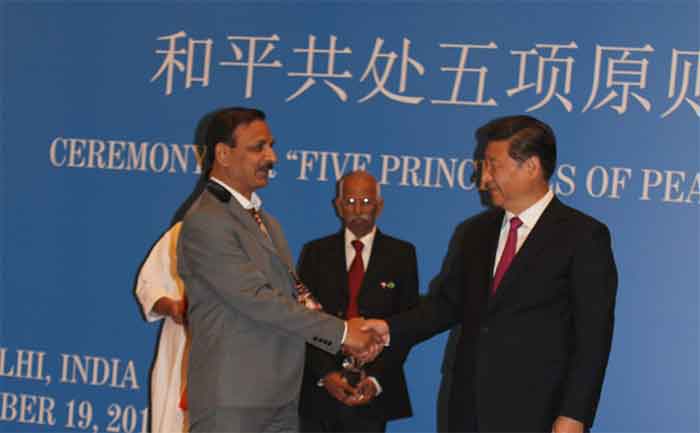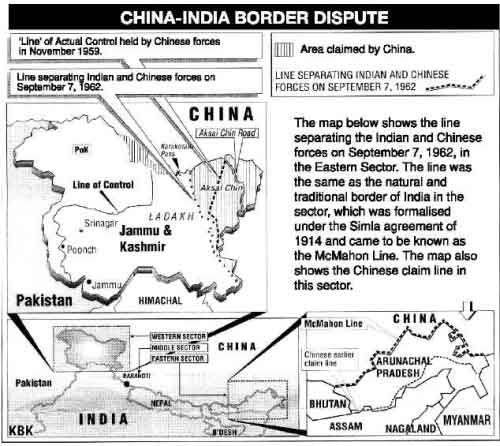
Two parameters are considered significant to determine the influence and impact of any country over its neighbours.
1. Political philosophy or model of governance.
2. Economic support or the scale of investments.
Applying these two to South Asia, the picture looks a bit grim for India even if it calls itself the largest democracy in the world and has been an inspiration in the past for its bordering countries. Communist China is emerging as humble, non-partisan and a saviour for many ailing economies.
The reasons are obvious.
The gradual erosion of democracy in India and growing investment projects by China have become the catalysts for change, thus making authoritarianism a new model of governance in many countries of South Asia.
A few Western policymaking institutions reporting on South Asia have expressed their anguish that most of India’s adjacent countries, which India used to have a significant influence on, are looking towards China or have come close to China for the improvement of their economy.
China has laid a wider network of development projects in most countries under the One Belt One Road initiative that started with a huge investment and the growth of basic infrastructure in poor countries.
China believes that the Western countries supported India to weaken it economically by giving a boost to its manufacturing industry. Even, though many factories were shifted to India that did not diminish the Chinese influence. Rather it has been seen as entrenching so deeply that the countries are giving free access to China, be it Maldives, Burma, Sri Lanka or Bangladesh.
A few weeks ago, the newly elected President of the Maldives, Mohammad Muizzo, started his electioneering with the slogan “India Out”. Immediately after assuming the presidency, his first visit to China was considered unprecedented, it used to be the other way around earlier.
Receiving a red-carpet welcome from China, he also signed more than ten agreements with a promise of huge investment in maritime defense, considered a bad sign for India. He issued an ultimatum to India recalling more than ninety soldiers and two military helicopters from the country before March 15. The relations seem to have reached an edge between the two countries. The Prime Minister of India added fuel to the fire when his promotion of tourism photos in Lakshadweep went viral that had a message to tourists to shift their travel plans from the Maldives to the Indian coast. Soon, the Indian travel agencies took Maldives tour packages off their websites.
China has pledged to increase its defense investment and strengthen the maritime borders of the Maldives.
According to Indian defense analysts, China is not only using India’s neighbours to encircle it within its land and sea borders but also making investments that are turning them into new colonies of Communism.
Maldives is a small island with a population of half a million but it is considered to be of great importance in the Arabian Sea where China seems eager to get space against any imminent incursions.
Diplomatic relations between Burma and India look friendly on the surface. The inherent tension between the two countries did surface when Burma dropped some bombs on Indian soil in January last year. Myanmar’s Junta said it had targeted its pro-democracy groups within its borders. ‘The bombs were not meant for India. It happened accidentally’. The reports emanated from Myanmar did not satisfy many analysts.
Because of many insurgent groups involved in anti-India activities in the northeast of India in the last few decades, many would easily cross over the border with Myanmar as a refuge from arrests. That issue was raised with the host country many times. India had earlier started implementing a plan to control and stabilize its borders in the northeastern states bordering Myanmar. In many places the border has been fenced, the number of border guards increased and the vigil has been strengthened. This has worked to some extent but the border crossing has not stopped.
The various ethnic groups in the region across the border are quite close. Crossing the border was not as difficult as it has become now since the BJP government imposed tough restrictions on the entry of Rohingya Muslims into and out of India. The border restrictions have impacted the activity of the ethnic groups who have relations straddled across. Many incidents of illegal crossing and clashes are reported by the media, blaming Rohingyas for this. However, the border between Mizoram and Myanmar is still used for the smuggling of arms, drugs and extremists which do end in clashes and strained relations between the two countries.
If China is silent on the alleged abuses of the military government of Myanmar, India, a so-called democratic country, has also remained silent. The border clashes between China and Myanmar have also been very frequent in recent days. Yet, China has made inroads into the military-ruled country. Both India and China are dealing with the border issues silently but China’s growing influence on Junta does question India’s diplomacy with its Eastern neighbours.
India has always played the role of a big brother to Nepal, be it because of the commonality of religion or cultural similarities. The Prime Minister of India, Narendra Modi, tried to deepen the relations during his visit to Nepal in 2022 when he laid the foundation stone of the Buddha Vihar at the birthplace of Lord Budha. Earlier, in 2020, the Nepalese government had raised a question about its 400-km Kalapani border when India inaugurated an 80-km road near Lipulekh Pass, which connects Dharchula in the state of Uttarakhand with the Chinese border. Nepal had expressed serious concern by calling the Indian diplomat to its foreign office and stressed exerting its right over the border through a constitutional amendment in the Parliament.
According to one of the think tanks’ analytical reports, it was India advising the Nepali PM to raise the question of the border dispute. ‘The intention was to provide a lifeline to Nepal’s pro-Indian Prime Minister Oli, who was facing fierce internal opposition and a demand to resign. Prime Minister Oli’s raising the border issue against India helped calm down the opposition, which immediately supported the constitutional amendments’. Despite close relations with India, China has made its presence in the Himalayan kingdom by investing in roads, hydroelectric projects or the development of infrastructure devastated during earthquakes.
Soon after Sheikh Hasina became the Prime Minister for the fourth time in the recent controversial elections in Bangladesh, India was the first country to congratulate her and gloated over the closer relations between the two countries. Bangladesh is the priority under India’s “Act East” policy, which has one of the objectives to curb China’s expansionism and influence in the East of the region.
India and Bangladesh are too interlinked, too interdependent and too entrenched in each other due to their history and bonhomie. Both share more than 4,000-mile land border and dozens of common rivers that are considered a lifeline for millions of people in the two countries.
Sheikh Hasina is ambitious to share everything India invests in its neighbourhood. She has expressed her desire to partner in the triangular project of a 1400 km highway between India, Myanmar and Thailand. Despite their closeness, the Teesta River is emerging as a major stumbling block between the two countries. Another issue of Rohingya immigrants has created a misunderstanding between two heads of state, and Sheikh Hasina wants to resolve the issue with Myanmar through India’s close mediation on humanitarian grounds. India has not given any indication.
Sheikh Hasina has been very vocal many times over the growing wave of Hindutva hate speeches and mob violence against Muslims in India. That came as a real surprise. Because of many protests, violent incidents and killings against the proposal of India’s Citizenship amendment laws, the leadership in Bangladesh could not afford to stay silent. Diplomacy took a hit at that time when many ministers of Hasina’s cabinet openly criticized PM Modi for his anti-Muslim policies.
Rameez Chaudhary, an expert on India-Bangladesh affairs in Dhaka, says, ‘A few weeks ago, the United States raised many questions over the alleged human rights abuses and disputed elections in Bangladesh, and there are concerns expressed over China’s growing investment in the country. China has completed twelve highways, twenty-one bridges and twenty-seven electricity projects in two years in the country. Bangladesh’s decreasing dependence on India as becoming a key player in the Belt and Road Initiative worries the West more than India’.
Sri Lanka has already come out of India’s grip and influence. China has extended its generous hand to recover the country’s economy, especially its maritime security has become a point of concern for India.
China has pledged more than four billion dollars as a debt loan, while it has already taken control of Hambantota Port, several airports and highways in the dwindling economy.
According to Sri Lankan journalist, Anjana Sarvadhana ‘India has been seen as an intruder in the internal affairs of Sri Lanka, be it to help the Tamil rebels in the past or to lobby clandestinely for pro-Indian politicians in the elections. On the contrary, China has helped monetarily in restoring the economy of our country and never became involved in our internal politics’.
Interestingly, India and Pakistan, arch-enemies of each other, are more or less silent on mutual relations that were never friendly since the two countries came into existence after partition in 1947. The countries are taking the lead in rescuing each other’s citizens. Indian Navy rescued dozens of Pakistanis from Somali pirates and Pakistan returned the favor by getting Indians freed recently. And, Pakistan earlier helped evacuate Indian students at the start of the Russia-Ukraine war from Kyiv and provided them food etc. until they landed in India.
A ceasefire has been working on the Line of Control for the past three years, due to which tensions have eased along the border.
However, the responsibility of helping some Baloch rebels in Baluchistan has been blamed on India many times recently. Pakistan accuses India of providing the Baloch separatist movement with weapons, just as the Bengalis were armed with weapons before the war in East Pakistan in 1971.
India’s rulers often repeated the threats of taking over Pakistan-administered Kashmir and Gilgit Baltistan. That was countered by the Army Chief of Pakistan on Kashmir Solidarity day saying that ‘we are ready to face any aggression and will crush the enemy like we did during Balakote’. Pakistani analyst, Salman Akhunzada says that the statements issued are nothing but rhetoric. ‘Both countries seem to be focusing on their internal conflicts. Pakistan is going through serious political and economic turmoil whereas India’s right-wing government’s Hindutva wave seen by the opposition as detrimental to its secular Constitution has created a serious polarization between North and South. The opposition political parties are blaming the ruling party for undermining the federal structure, muzzling the media and witch-hunting the opponents to derail the democratic system of the country. At the same time, democracy in Pakistan is taking its last breath’.
The closeness between China and Pakistan does not bode well for India. Russia resorted to breaking it but Moscow is not in a position to influence China as it has become more dependent upon Beijing after its serious confrontation with the West.
After the G20 meeting in Delhi last year, the impression was created that India’s successful foreign policy has made it the axis of the world, especially as a ‘big brother’ in the Global South.
Ever since the allegations about killing or planning to kill some Sikh leaders in the Western countries came into the fore, India’s neutrality on Russia Ukraine war and the ineffective attitude to fighting China’s incursions in Ladakh and Arunachal, the impression of being the center of world diplomacy is waning away.
The Congress leaders blame PM Modi that two years after China’s occupation of more than 2,000 km of land in Ladakh and China’s growing presence in Doklam, he has remained silent and did not utter a word on Ladakh. ‘He is scared of China’ says Rahul Gandhi.
BJP believes that India’s independent foreign policy is not only gaining prestige but its economy has become the fifth largest economy in the world. For the first time, major companies including Boeing or Apple and heavy industries are setting up their branches in the country. Modi has promised to create a five trillion economy in a few years which has already crossed three trillion this year.
However, with China’s growing trade, construction projects and connecting highways, most countries in South Asia are automatically falling into China’s lap. While questions are being raised about India’s diminishing democracy and its desire to create a Hindu Rashtra from Indonesia to Kandahar, South Asian countries are coming more under China’s influence that could only be mitigated by either a huge investment or making the democracy follow the rule of law laid in the constitution. Both seem far-fetched dreams as long as the BJP is ruling India and the economy does not surpass China.
Nayeema Ahmad Mahjoor is associated with Independent Urdu and author of “Lost in Terror”

